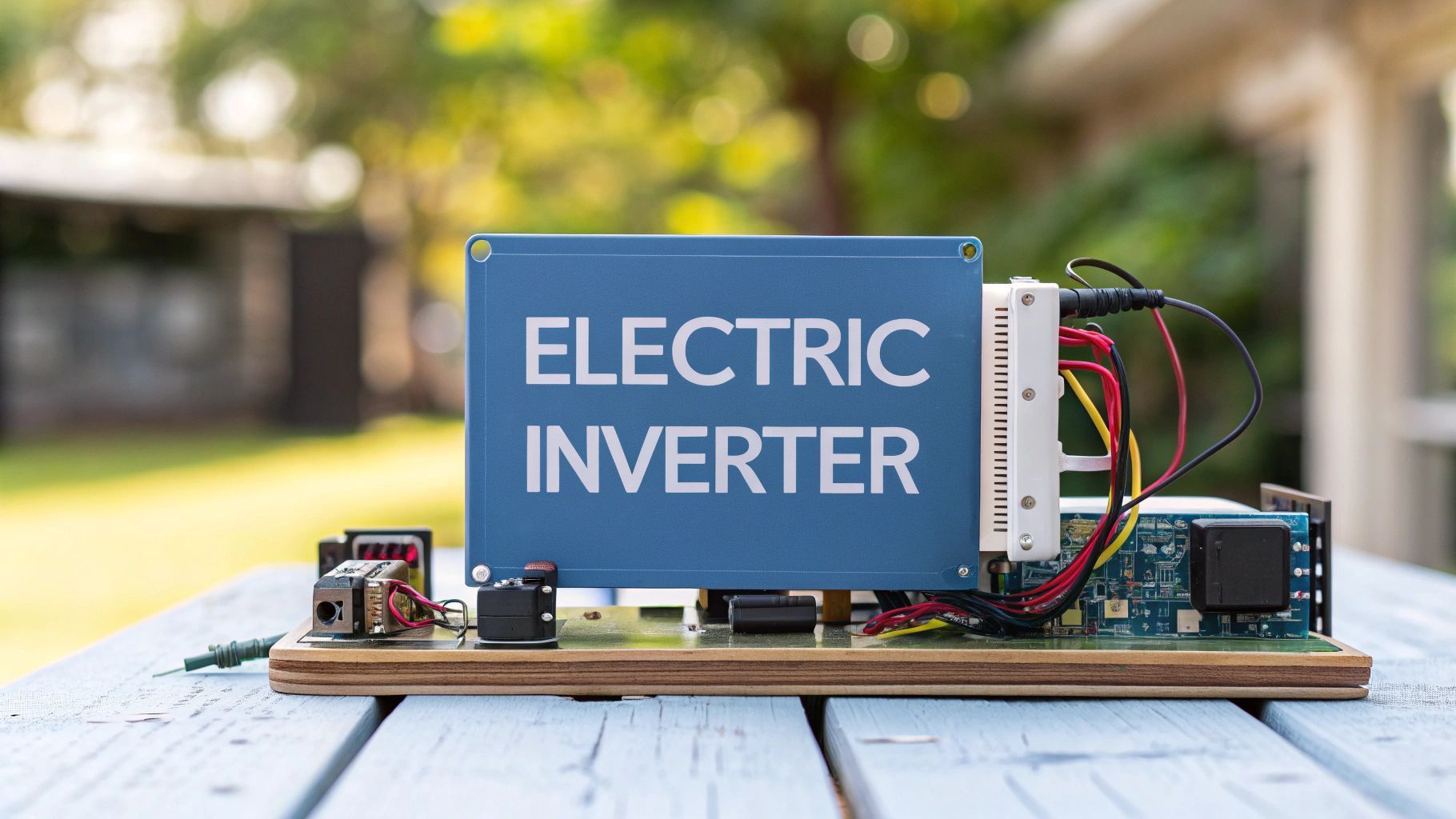UK Electric Vehicle Charging Networks Explained
When people talk about the UK's switch to electric vehicles they usually picture the cars themselves. But behind the scenes there is a far more complex story unfolding: the creation of a vast, intelligent charging network that forms the true backbone of our green transport revolution.
This is not just about sticking a few plugs in the ground. We are talking about a sophisticated ecosystem of hardware, software and advanced energy management systems all working together to make sure drivers can reliably power up wherever they are. It is a world of rapid EV charging technology, smart grid integration and clever new ways to manage and distribute energy.
Understanding the UK’s EV Charging Ecosystem
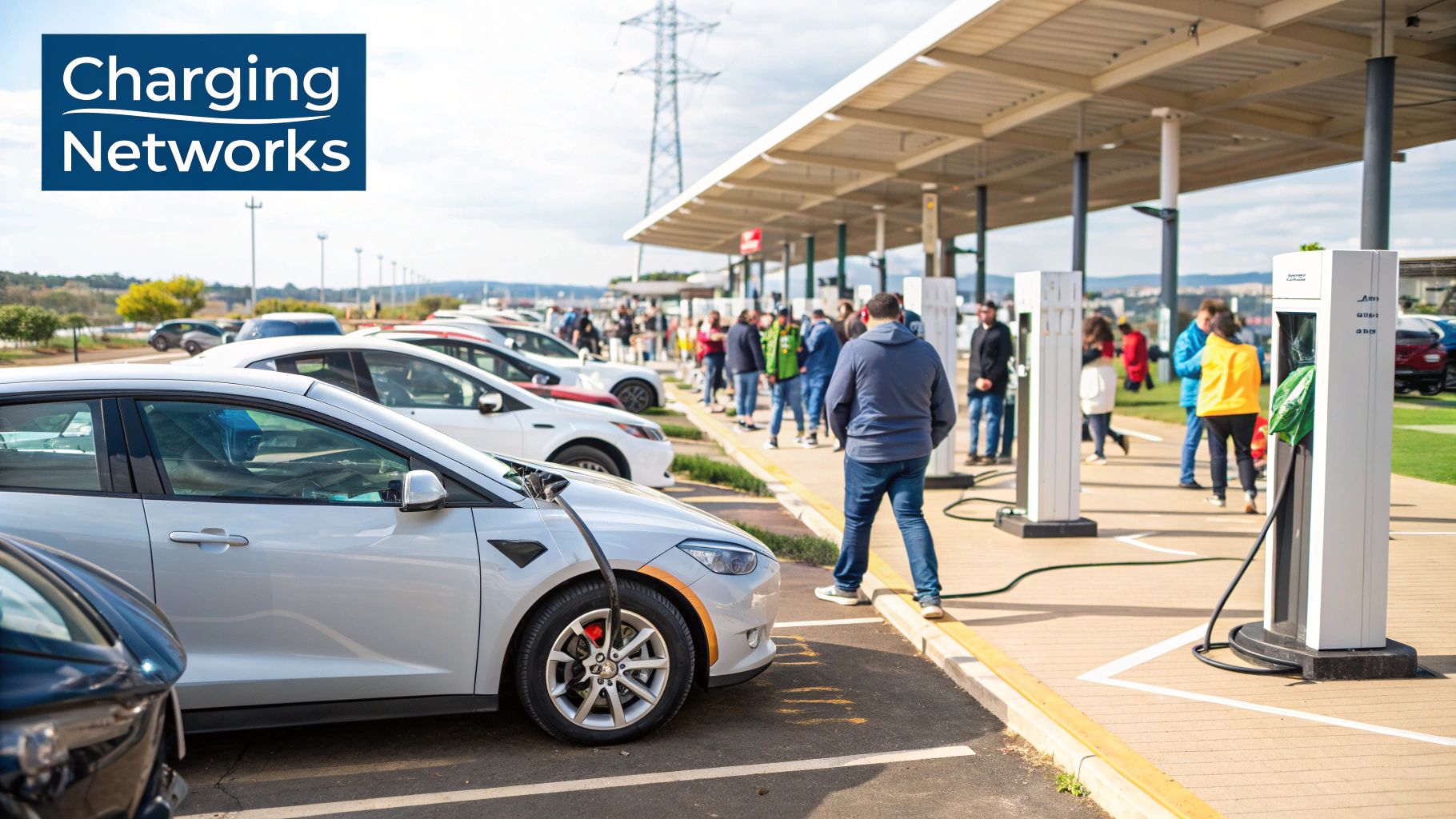
Welcome to a look inside the intricate world of the UK’s electric vehicle charging networks. Think of this less as a technical manual and more as a guide to the dynamic infrastructure that is powering the entire country's shift towards cleaner transport. It is a system that touches every part of our energy landscape from a quiet residential street right up to the national grid itself.
Over the next few sections we will unpack how this critical infrastructure actually works, digging into the core ideas that make widespread EV adoption a reality. Getting your head around these elements is the key to appreciating the sheer scale of the energy shift we are living through.
Core Concepts in Modern Charging Networks
To really grasp the big picture you need to understand the technologies that are making it all happen. These are not just separate bits of kit; they are designed to work in harmony to deliver a seamless and efficient charging experience for a rapidly growing number of EV drivers.
Here are the key building blocks:
- Rapid EV Charging: This is the game-changer. It is the technology that lets drivers add a serious amount of range in a short space of time, finally making long-distance EV journeys practical and convenient.
- Grid-Scale Batteries: These are huge battery systems that act as energy reservoirs. They store power from the grid (often when it is cheapest) or from renewables, ready to deliver the massive burst of power needed for rapid chargers without putting a strain on the local electricity supply.
- Combined On-Site Renewables: This involves integrating things like solar panels or even small wind turbines directly at charging hubs. It creates a more self-sufficient power source, cutting reliance on the national grid and slashing the carbon footprint of every charge.
- Distributed Energy Management: This is the brains of the operation. It is the intelligent control system that juggles all the different energy assets—chargers, batteries and renewables—to keep everything stable, efficient and as cost-effective as possible.
This blend of technologies is what creates a truly resilient and future-proof infrastructure. By pairing EV charging and batteries with smart, distributed energy strategies, the network can support a huge influx of electric vehicles, even in places where the grid connection is not very strong.
Ultimately all these interconnected parts form one cohesive system. Building out these advanced networks is absolutely fundamental to creating sustainable towns and cities. To see how these elements fit together in the real world, you can explore how ZPN Energy powers smart cities through our integrated solutions. This system is not just about charging cars; it is about completely rethinking how we generate, store and use energy.
The Building Blocks of a Charging Network
Think of an electric vehicle charging network a bit like our national road system. You have motorways for getting from A to B quickly over long distances and then you have the local B-roads for shorter, everyday journeys. In the same way, the EV network is built with different types of chargers, each designed for a specific job, making sure drivers can find the right power in the right place.
To really get your head around how it all works you need to understand the components. The infrastructure is not just about the physical chargers you see on the street. It is also the sophisticated software that manages everything behind the scenes, the payment systems that grant access and the smart tech that helps balance the demands on our energy grid. It is a complex dance between hardware and software, all working together to deliver a reliable charge time after time.
Charger Types and Their Roles
The heart of any EV charging network is of course the chargers themselves. They generally fall into three main categories, separated by their power output and therefore their charging speed. Each one plays a unique role in the ecosystem, from a slow overnight top-up at home to a super-fast power boost at a motorway service station.
The image below gives you a clear idea of just how big the difference in power is between these charger types.
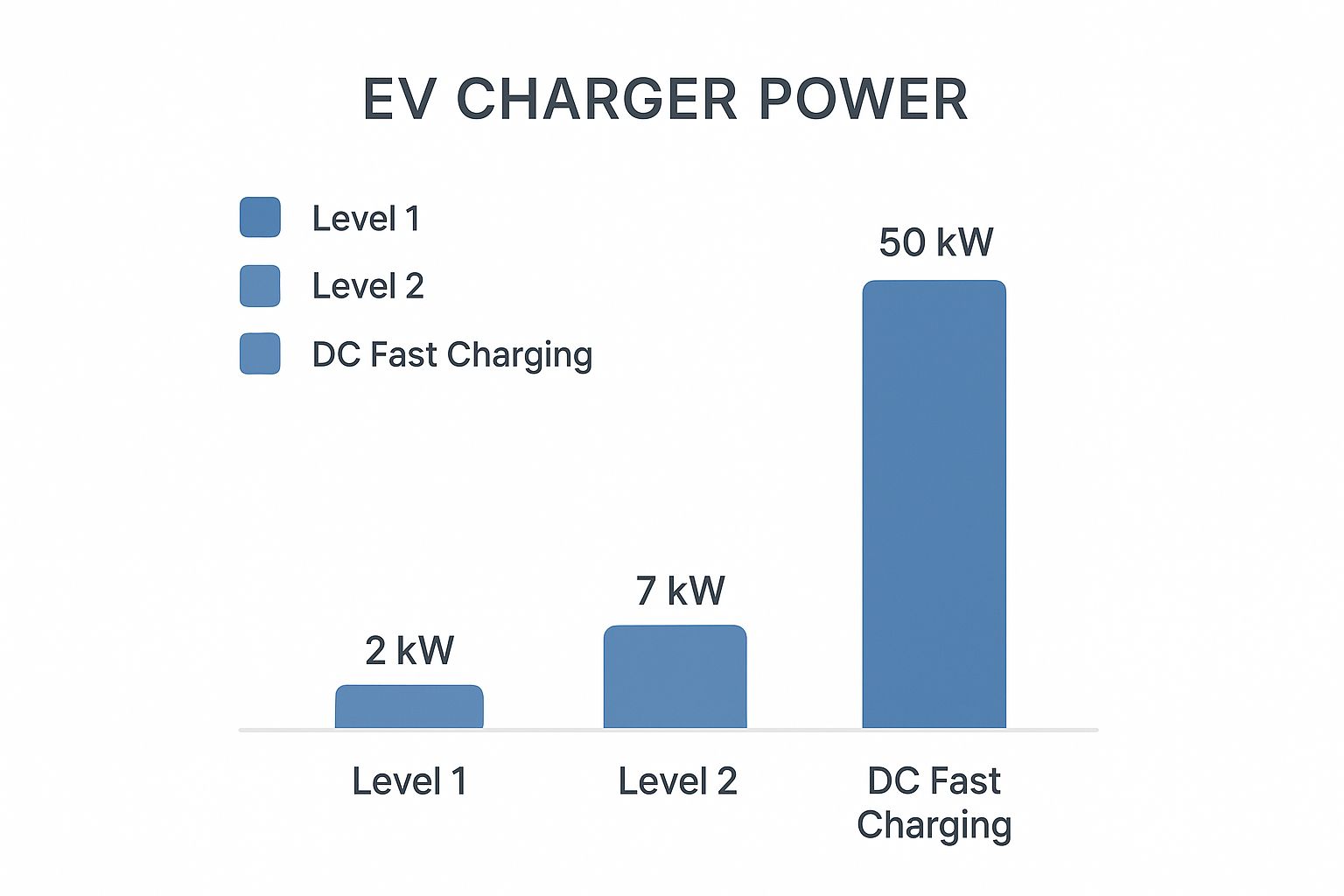
As you can see, the DC rapid and ultra-rapid chargers deliver a massive amount of power compared to the standard AC units. This is why they are absolutely essential for en-route charging on long journeys. Meanwhile, the slower AC chargers are the dependable workhorses for home and workplace charging, where cars are typically parked for several hours at a time.
To put this into a UK context, here is a breakdown of what you will find across the country.
A Comparison of UK EV Charger Types
| Charger Type | Power Output (kW) | Typical Location | Best Use Case | Average Charge Time (0-80%) |
|---|---|---|---|---|
| Slow | 3-6 kW | Home, Workplace | Overnight charging, all-day top-ups | 8-12 hours |
| Fast | 7-22 kW | Supermarkets, Car Parks, Workplaces | Topping up while shopping or working | 3-4 hours |
| Rapid | 50-149 kW | Motorway Services, Public Hubs | Quick top-up on a long journey | 30-60 minutes |
| Ultra-Rapid | 150 kW+ | Major transport routes, Charging Hubs | Fastest possible charge for minimal downtime | 15-30 minutes |
This variety ensures that whether you are parked for eight hours overnight or just stopping for a 20-minute coffee break, there is a charger that fits the bill.
Smart Charging and Grid Balancing
Beyond the physical hardware smart charging is the intelligence that makes the whole system work efficiently. Instead of a charger just dumping power into a car the second it is plugged in, smart systems can be much cleverer. They can schedule charging sessions for off-peak hours when electricity is cheaper and there is less demand on the national grid.
This is absolutely vital for managing the huge new load that comes from thousands of EVs charging at once. By shifting that demand away from the evening peak, smart charging helps prevent the grid from being overloaded. It also makes better use of renewable energy like wind power, which often generates more electricity overnight when we need it least.
Smart charging effectively turns a potential grid problem into a solution. It allows the network to absorb a growing fleet of EVs without requiring massive, immediate grid upgrades, making the transition to electric transport smoother and more sustainable.
The Challenge of Network Access and Interoperability
For drivers a great experience comes down to being able to access any charging point easily regardless of who runs it. This is where user experience and interoperability become critical. The UK now has over 80,000 charging points across nearly 40,000 locations – which is fantastic – but finding and using them can still feel fragmented.
Around 90% of non-fast chargers still need you to use a specific app or an RFID card, meaning drivers often end up juggling multiple accounts just to get a charge. While most new rapid chargers thankfully now accept simple contactless payments, the need for different access methods is still a real hurdle. If you want to dive deeper into this, there are some great insights into the best EV charging apps in the UK.
To fix this, aggregator services are popping up. These platforms give drivers a single app or card that works across multiple electric vehicle charging networks, which definitely simplifies payments and makes finding a charger less of a headache. The ultimate goal though is true interoperability – where any driver can use any charger with just a tap of their bank card. Getting to that unified, simple system is fundamental to encouraging more people to make the switch to electric.
Solving the UK's Charging Infrastructure Imbalance
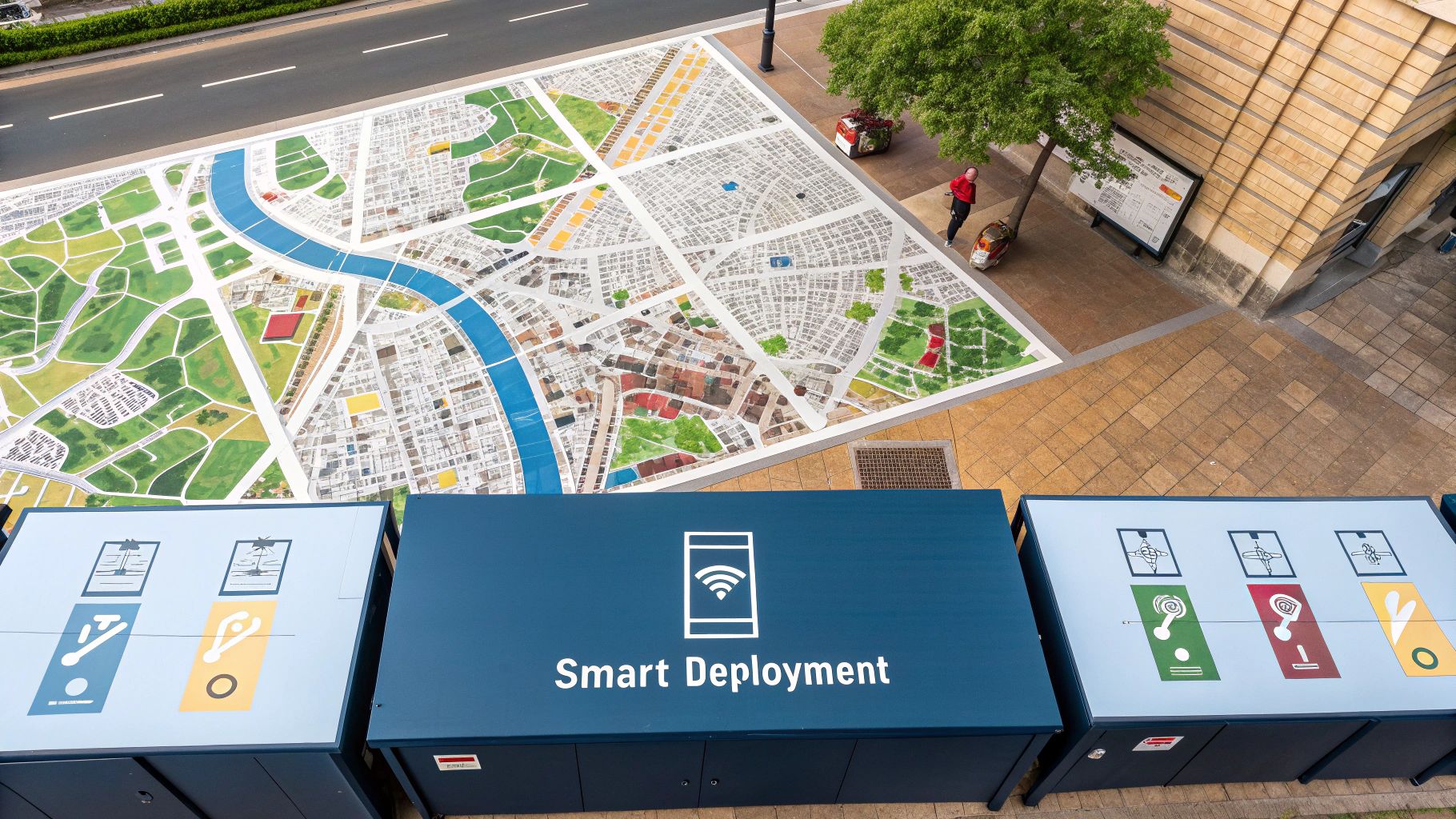
While the UK has made impressive strides in building out its electric vehicle charging networks, the reality on the ground is that this infrastructure is far from evenly spread. For countless drivers the ease of finding a charger is dictated entirely by their postcode.
This has created a stark imbalance, a "postcode lottery" where some regions are geared up for the EV transition while others are being left behind. It is a genuine barrier to nationwide adoption. A driver in Greater London has a wealth of charging options but someone in Northern Ireland faces a completely different and far more challenging situation.
Closing this gap is absolutely vital if the switch to electric transport is to be fair and accessible for everyone, not just those living in busy metropolitan hubs. The reasons for this disparity are complex, often a mix of public investment levels, local authority priorities and the natural tendencies of the private sector. Commercial operators will always gravitate towards areas with high traffic and population density as these spots promise a faster return on investment, leaving less populated areas underserved.
The Numbers Behind the Postcode Lottery
When you dig into the data the scale of this imbalance becomes painfully clear. Across the UK there are now 84,218 public EV charging devices—a figure that has jumped by around 30% in the past year alone.
Yet a closer look reveals that Greater London is home to over 25,502 of them. That is roughly 30% of the entire country's public chargers in one city. In stark contrast, Northern Ireland has just 707 devices. For a deeper dive into these numbers, you can explore the latest EV charging statistics from Uswitch.
Adjust for population and the picture gets even more dramatic. London provides 263 chargers for every 100,000 people, creating a dense and convenient network. Northern Ireland on the other hand offers only 35 chargers per 100,000 residents. A driver's confidence in going electric is quite literally tied to where they live.
Strategic Solutions for Balanced Growth
To fix this we need a far more strategic approach—one that looks beyond immediate commercial wins. It demands targeted investment and smart policies designed to kickstart growth in those underserved regions, ensuring no community is left on the sidelines.
A few key strategies can make all the difference:
- Targeted Government Funding: Allocating funds specifically for regions with the lowest charger-to-population ratios can give private companies the incentive they need to build in less commercially attractive areas.
- Grid-Scale Batteries: In rural spots where grid connections are weak, installing grid-scale batteries alongside charging hubs is a game-changer. These systems store energy during off-peak times and release it for rapid EV charging without overwhelming the local power supply.
- On-Site Renewables: Pairing charging sites with solar canopies or other renewables creates self-sustaining energy sources. This slashes running costs and reduces reliance on an already strained grid.
A truly national network cannot have black spots. By combining smart investment with innovative technologies like battery storage and distributed energy, we can build a cohesive infrastructure that supports every driver, regardless of their location.
This is not just about fairness; it is about building a resilient and robust national asset. As the number of EVs on UK roads keeps climbing, ensuring reliable charging access everywhere is fundamental to keeping the momentum going and hitting our national decarbonisation goals.
Powering Chargers on a Constrained Grid
The ambition to build widespread rapid EV charging has run headfirst into a massive obstacle: the limits of our national grid.
Our existing electrical network was built for a different world, one with predictable, steady demand from homes and industry. It was never designed to handle the colossal, sudden power spikes that happen when multiple ultra-rapid chargers are used at the same time.
This problem is known as an 'EV charging from constrained grid connections' issue. In simple terms, the local cables and substations in many areas just do not have the muscle to deliver the sheer volume of electricity needed. You cannot just plug a hub of powerful 150kW chargers into the nearest power line; you would risk destabilising the local supply and causing blackouts for everyone.
This bottleneck is one of the biggest hurdles holding back the expansion of the UK’s charging networks. But instead of waiting decades for the grid to be upgraded, engineers are using clever solutions that work with the grid we have now, using energy storage and on-site generation.
Grid-Scale Batteries: The Energy Buffer
The most effective way to solve a weak grid connection is to install grid scale batteries . Think of them as a local energy reservoir, a buffer that sits between the chargers and the grid.
These large battery units are installed right next to the EV chargers, effectively shielding the grid from the intense demands of rapid charging. Instead of the chargers yanking a huge amount of power directly from the grid all at once, the battery system takes a much gentler approach.
It charges itself slowly and steadily, often during off-peak hours overnight when electricity demand is low and prices are cheaper. This slow, constant sip of energy places almost no stress on the local infrastructure.
When a driver plugs in, the magic happens. The charger draws its power not from the weak grid connection but from the fully charged, on-site battery. The battery can unleash its stored energy in a huge, controlled burst, delivering the 150kW or more needed for an ultra-rapid charge without ever overwhelming the local network.
This approach completely changes the economics and feasibility of building charging hubs. It means we can deploy essential rapid charging in locations that would otherwise be impossible, like remote motorway services or rural towns, accelerating the build-out of a truly national network.
The Power of On-Site Renewables
To take this a step further, many new charging hubs are now pairing grid-scale batteries with their own renewable energy generation. By installing combined on site renewables like solar canopies over the parking bays or even small wind turbines nearby, these sites can produce their own clean electricity.
This energy is then used to charge the battery system directly, creating a far more self-sufficient and sustainable ecosystem.
This integrated model offers several key benefits:
- Reduced Grid Reliance: The site generates its own power, meaning it draws less from the national grid. This lowers its carbon footprint and provides a hedge against volatile electricity prices.
- Enhanced Resilience: If there is a local power cut, a hub with charged batteries and its own generation can often keep operating, providing a critical service when others cannot.
- Optimised Energy Use: Intelligent software, a form of distributed energy management, decides the smartest action at any given time—whether to store solar power, charge from the grid when it is cheapest or even sell excess energy back to the grid to create another revenue stream.
Seeing how these systems work in the real world offers a fantastic glimpse into the future of our energy infrastructure. For a detailed look at this technology in action, you can learn more about how ZPN battery storage systems are powering the UK's EV revolution.
Mobile Charging and Future Concepts
The same principle of using stored energy to bypass grid limitations also works on a smaller, more flexible scale. Mobile EV charging units are in essence batteries on wheels.
These can be deployed to provide temporary rapid charging at events or to support commercial fleets in depots where permanent upgrades are still in the pipeline.
Looking ahead, the relationship between EVs and the grid is set to become even more collaborative. The concept of Vehicle-to-Grid (V2G) technology is gaining serious momentum. In a V2G system, an EV’s battery does not just draw power from the grid—it can also send it back when needed. A network of thousands of connected EVs could act as a giant, distributed battery, helping to stabilise the grid during periods of high demand.
How Mobile EV Charging Fills the Gaps
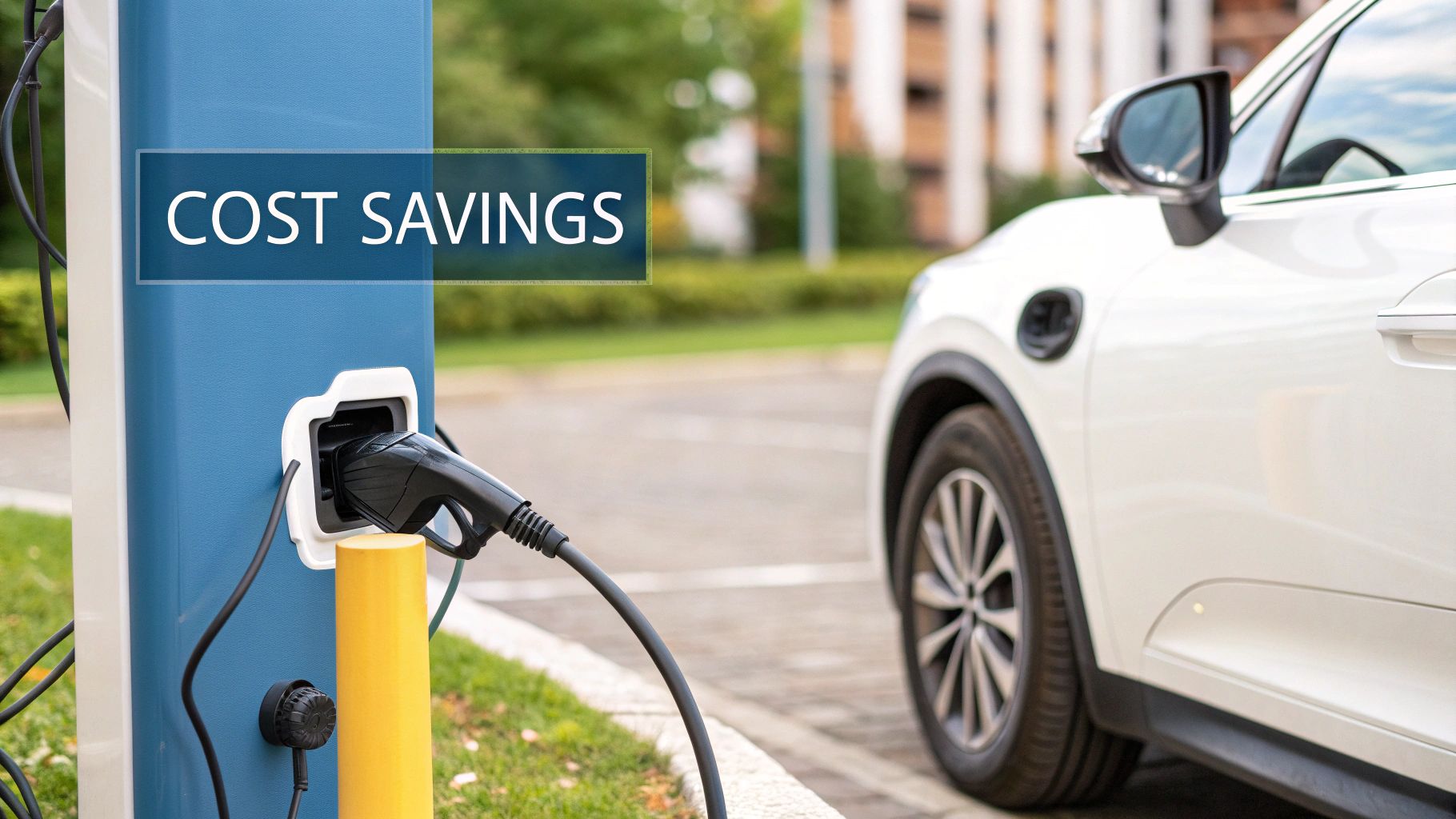
Fixed charging infrastructure is the bedrock of any solid EV network but what happens when a driver cannot get to a charger? Simple. The charger comes to them. That is the powerful idea behind mobile EV charging —a solution that acts as a power bank on wheels.
These mobile units are a brilliant addition to the UK’s charging ecosystem. They offer a flexible, responsive way to deliver power exactly where and when it is needed most. They are not designed to replace permanent chargers but to work alongside them, filling critical service gaps and solving tricky logistical headaches.
The most obvious use case is emergency roadside assistance, finally putting to rest the fear of being stranded with a dead battery. But their strategic value goes far beyond breakdown cover.
Strategic Deployment and Flexibility
Mobile charging units are a versatile tool for both businesses and network operators. They make it possible to deliver power without the costly and time-consuming civil engineering works that fixed chargers demand. This flexibility is key to overcoming temporary or location-specific challenges.
Take a commercial fleet depot, for example. A business might be facing a months-long wait for a grid connection upgrade to install chargers for its new electric vans. Mobile EV charging units can bridge that gap, providing the essential overnight charging to keep the fleet on the road from day one.
These units essentially decouple charging from a fixed location. They offer an agile solution for temporary demand, whether that is at a weekend music festival, an agricultural show or a construction site that lacks permanent power infrastructure.
This adaptability also lets companies test the waters before committing to a major investment. A supermarket chain could deploy a mobile unit at a new store to gauge customer demand for EV charging. If the unit sees heavy use, it builds a powerful business case for a permanent installation.
A Component of Distributed Energy
Mobile charging units are much more than just portable chargers; they are a vital part of a wider distributed energy strategy. Each unit is a self-contained system, often housing a substantial battery pack capable of delivering rapid charging speeds.
This capability makes them invaluable for situations involving EV charging from constrained grid connections . A mobile unit can be trickle-charged slowly from a standard low-power source and then deliver a fast, high-power charge to a vehicle when it is needed.
It is the same principle as a large, static grid scale battery but on a flexible, movable platform.
Here are a few key use cases where they shine:
- Fleet Charging: Powering up commercial vehicle depots long before permanent infrastructure is in place.
- Emergency Services: Offering rapid response charging for stranded EV drivers, which in turn boosts consumer confidence.
- Event Power: Delivering temporary charging at festivals, concerts and sporting events without needing permanent grid upgrades.
- Market Testing: Allowing businesses to assess charging demand in specific locations before investing in fixed hardware.
The ability to move charging capacity to where it is needed creates a more resilient and responsive network. For a closer look at these adaptable systems, you can learn more about the portable power and permanent impact of ZPN's mobile charging units. By filling the gaps left by the fixed network, mobile charging ensures that power is always available, boosting the reliability of the entire ecosystem.
The Future of UK Public EV Charging
The journey of the UK's public EV charging networks has been one of incredible progress. What started as a sparse collection of charge points for early adopters has grown into a far more sophisticated and connected system. This evolution has been driven by a powerful mix of technologies all working together to create a resilient, forward-thinking infrastructure for the nation’s drivers.
The future is not about finding a single silver bullet. Instead, it is about blending different strategies that work in harmony. This means a rich variety of charger speeds, from convenient lamppost units right up to powerful hubs offering rapid EV charging . It also depends on pioneering solutions like grid-scale batteries and mobile EV charging , which are absolutely essential for tackling grid constraints and making sure power is always available where it is needed most.
A Smarter, Integrated Energy System
Looking ahead, the direction of travel is clear: a much deeper integration between charging infrastructure and the wider energy grid. Charging hubs will increasingly act like mini power stations, blending multiple technologies into a cohesive, intelligent whole.
This model pulls together several key elements:
- Grid-Scale Batteries: These will remain vital. Think of them as energy buffers, allowing for rapid charging even in areas with weak grid connections. They store cheap off-peak power and release it during peak times, smoothing out demand.
- Combined On-Site Renewables: Solar canopies and other renewable sources will become a standard feature, not an afterthought. They generate clean, local power to charge both the batteries and the vehicles, cutting down our reliance on the national grid.
- Distributed Energy Management: Sophisticated software is the brain of the operation. It intelligently manages the flow of energy between the grid, batteries, renewables and vehicles to squeeze out every drop of efficiency and keep costs low.
This combination of EV charging and batteries , all orchestrated by smart systems, represents a fundamental shift. It turns charging hubs from simple power consumers into active, dynamic participants in a decentralised energy network.
Seamless Driver Experience and Interoperability
The evolution of the UK's public EV charging network has been fired up by both policy and private investment. We have seen huge progress not just in the sheer number of chargers but in their quality and convenience, especially with the roll-out of rapid chargers. While government incentives have been crucial for getting installations off the ground, it is the competition in the private sector that has really spurred on improvements. The network is now firmly on a path toward full smart grid integration and interoperability, which is fantastic news for creating a seamless experience for drivers. You can explore a detailed history of these developments and changes in the UK's EV charging infrastructure on EV Charger Post.
The ultimate goal is to make public charging as simple and reliable as using a petrol pump. This means true interoperability, where any driver can use any charger with a simple tap of a bank card, supported by transparent pricing and real-time availability data.
As these advanced, integrated electric vehicle charging networks become the norm they will do much more than just power cars. They will become a critical part of a smarter, more flexible and sustainable national energy system, confidently supporting the UK’s transition to an all-electric future. The foundation has been laid and the direction is set for an exciting and efficient charging ecosystem.
Frequently Asked Questions
Getting to grips with the world of UK electric vehicle charging networks can throw up a few questions. Here are some straightforward answers to the queries we hear most often, clearing up some key ideas from this guide.
What Is the Difference Between a Rapid and a Fast Charger?
The real difference comes down to the kind of power they deliver and how fast they can do it. Fast chargers provide alternating current (AC) at a rate of 7kW to 22kW . Your car’s own onboard converter has to change this AC power into direct current (DC) to fill up the battery, making them a great fit for longer stops like at the supermarket or your workplace.
Rapid chargers on the other hand supply high-power DC electricity straight to your vehicle’s battery, completely bypassing the car’s internal converter. This direct feed allows for much higher charging speeds, anywhere from 50kW right up to 350kW . As a result, a compatible EV can get to 80% charge in as little as 20 minutes, which is why you see them at motorway services and they are essential for long-distance journeys.
How Do Grid-Scale Batteries Help with EV Charging?
Think of grid-scale batteries as local energy reservoirs, making rapid charging possible even where the local grid connection is a bit weak. If an area cannot supply the huge amount of power needed for a charging hub, a large battery system is installed on-site.
This system slowly ‘trickle charges’ itself from the grid, usually during off-peak hours when electricity demand is low. Then when a driver plugs their car in, the charger pulls its power directly from this fully charged battery, not from the grid itself.
The battery can discharge its stored energy at an incredibly high rate, delivering the power needed for rapid EV charging without overwhelming the local electricity infrastructure. This clever solution means we can build charging hubs in locations that would otherwise be completely unsuitable.
Do I Need Multiple Apps for Different UK Charging Networks?
This used to be a major headache for drivers but thankfully the situation is getting much better. New government rules now require all new rapid chargers of 50kW and above to have contactless payment, so you can just tap your standard bank card.
While many of the slower AC chargers still lean on specific apps or RFID cards, the industry is moving quickly towards interoperability and roaming agreements between the different networks. We are also seeing more aggregator apps and services pop up. These let drivers access multiple electric vehicle charging networks all through a single account, which really simplifies finding, using and paying for a charge anywhere in the country.
At ZPN Energy , we provide the advanced charging and energy storage solutions needed to build a resilient and efficient EV infrastructure. Discover our fully integrated systems today.


